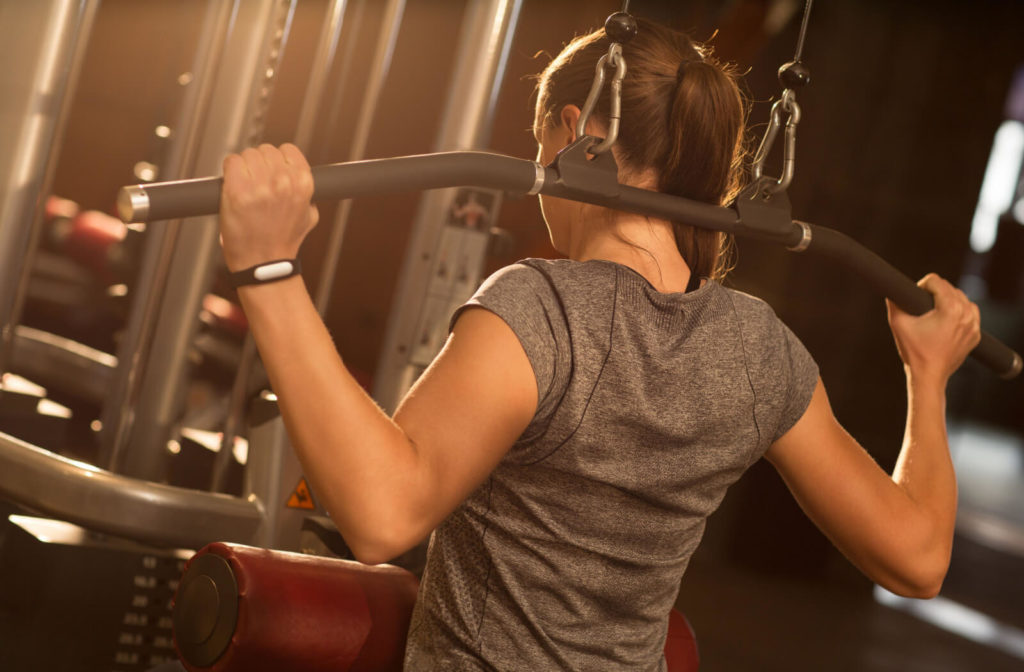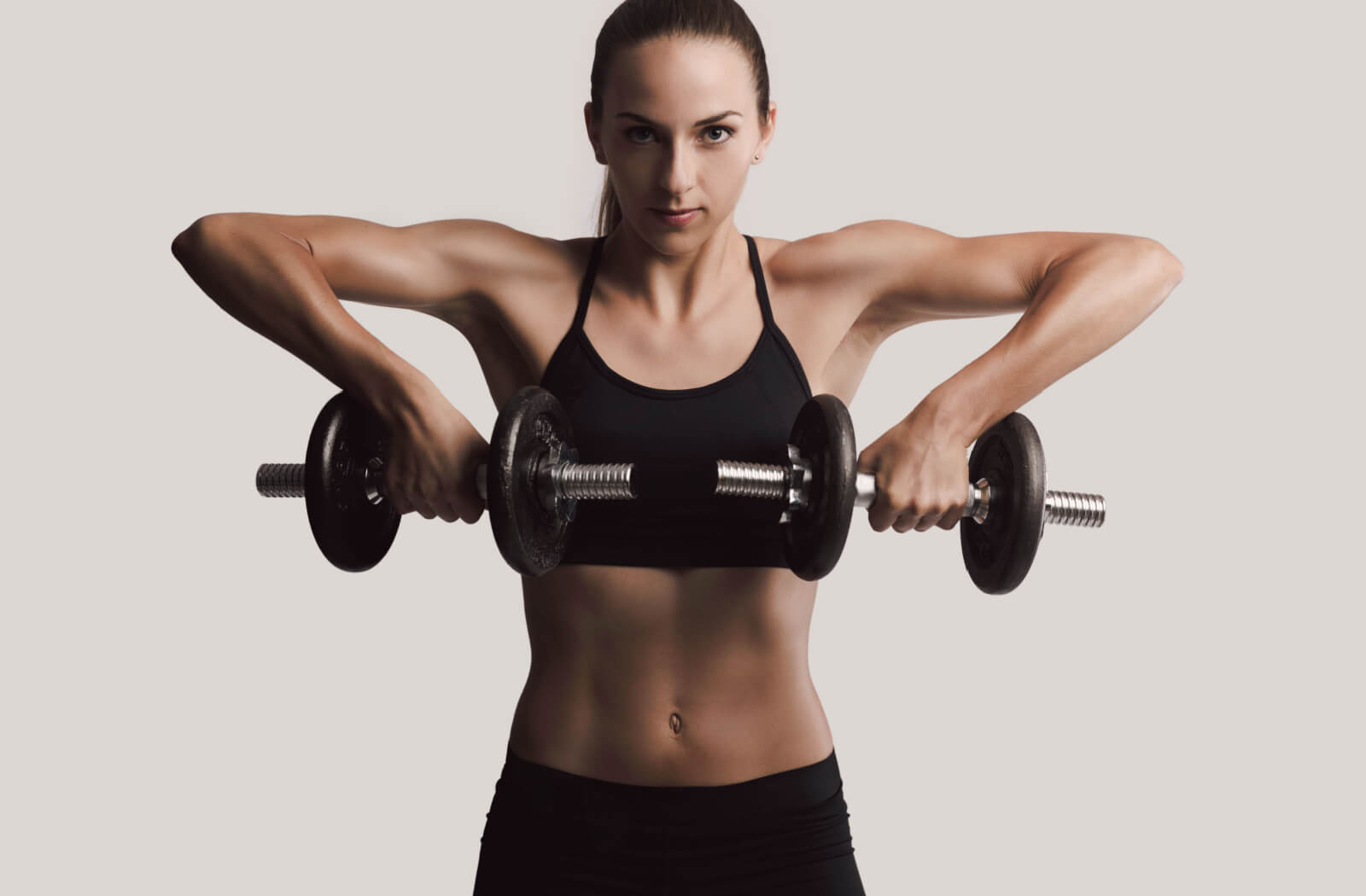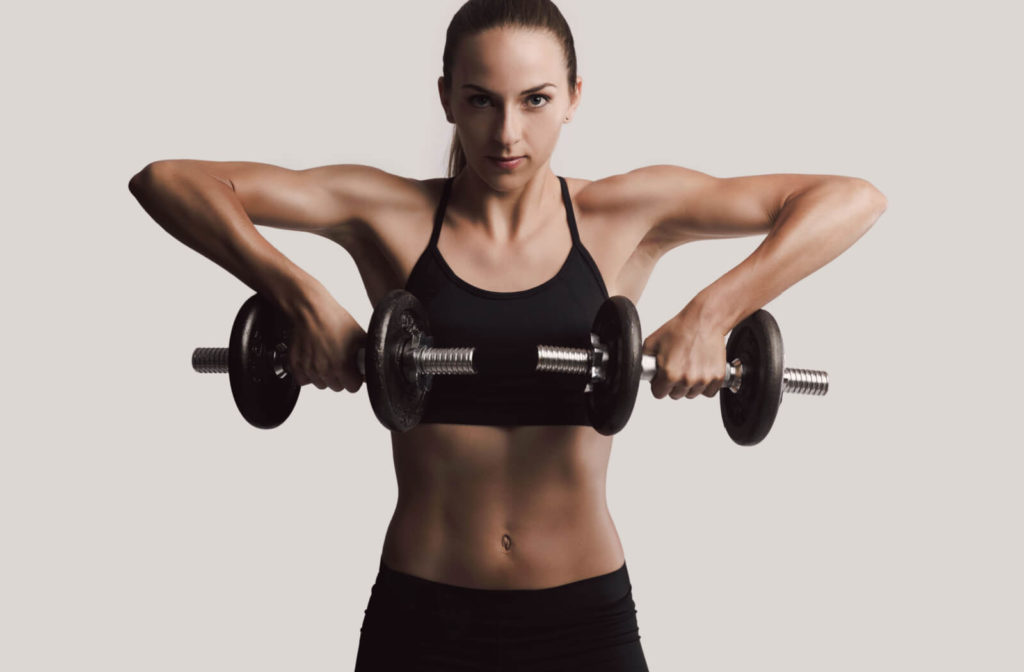When you injure yourself, the last thing you want to do is aggravate the symptoms and delay your recovery. Rotator cuff injuries can be difficult to rest, slow to heal, and agonizing. Booking an appointment with a physiotherapist or chiropractor for a treatment plan can help with the healing process.
Though a specific exercise regime is crucial for optimally recovery, you must be cautious and avoid movements that cause pain or worsen your injury. Upper body exercises can exacerbate an already injured shoulder, but your physiotherapist or chiropractor can assess your rotator cuff and give you exercises to promote strengthening and healing.
Should You Exercise with a Rotator Cuff Injury?
Immediately following an injury, you should follow the RICE method: rest, ice, compression, and elevation to reduce swelling and manage pain.
Before you jump back into your regular gym routine, you should visit a physiotherapist or chiropractor to get some exercises and stretches that will help heal you, not harm you.
In the meantime, you could try some stretches and mild exercises to help keep some movement in your shoulder before your appointment. These could include:
- Doorway stretch: Stand in an open doorway, raise your arms 90 degrees on either side of your body, place them against the door frame, and lean forward to feel the stretch in the front of the shoulder. It should look similar to doing a wide standing pushup.
- Side-lying external rotation: lie down on your non-injured side, bend the injured arm to 90 degrees, and lay it on your side. Keeping your elbow to your side, lift your arm until you feel the strain.
However, incorporating the stretches into your routine as prescribed by your therapist after your first session is crucial. If you don’t move the joint out of fear of reinjury, you can experience complications like:
- Frozen shoulder
- Loss of range of motions
- Muscle atrophy and reduced strength
- Chronic stiffness
Types of Rotator Cuff Injuries
Every time you move your arm, you’re engaging your rotator cuff. Your rotator cuff is a set of muscles and tendons surrounding the shoulder joint, and they’re critical for your shoulders’ movement.
Not only do they stabilize your arms, but they’re responsible for the rotational movement of the joint. 4 muscles support your shoulder and make up the rotator cuff:
- Supraspinatus
- Infraspinatus
- Teres minor
- Subscapularis
The Most Common Shoulder Injuries
Your shoulder joint is the most mobile joint in your body. The ball and socket joint offers the most range of motion, but stability comes at a cost. This design leaves a lot of room for injury. Some of the most common injuries include:
- Impingements, when one of the muscles swells because of strain or overuse injuries, causing pinching in the space between the arm and shoulder
- Rotator cuff tears, when the tendon or muscle is torn, either partially or completely

Worst Exercises for Rotator Cuff Injuries
Strengthening your rotator cuff is essential because it helps stabilize the muscles and encourages a full range of motion in your shoulder. However, when you have an injury, some exercises can do more harm than good.
You should have an assessment with a chiropractor or physiotherapist to determine which exercises are best for your injury to avoid further damage to your rotator cuff. Generally, there are specific exercises to temporarily remove from your workout set.
- Upright Rows
An upright row internally rotates your shoulder as you pull the weight up, which can cause impingement. If you’re in pain, you may compensate by rounding the shoulders, leading to wear and tear injuries.
- Triceps Dips
Triceps dips put a lot of weight on your shoulder, and if you lack shoulder extension mobility, you can injure or reinjure your rotator cuff. It’s easy to make the mistake of rounding the shoulders and hunching the upper back, which rotates the shoulder blades.
- Lat Pulldown Behind the Neck
Pulling the lat pulldown bar behind your head can be a bad idea for healthy shoulders, but for weakened shoulders, the external rotation can place stress on the joint. Reduced mobility when you’re injured can lead to poor form, causing compensation in your shoulders.
- Lateral Raises
Lateral raises isolate the middle deltoid as the arm moves away from the body in adduction. The initiating muscle for this exercise is the supraspinatus muscle, but if this muscle of the rotator cuff is injured, it can lead to a further impingement in the shoulder.
Start Healing & Strengthening Your Shoulder
Getting an assessment with a movement expert is the first step on the way to recovery. Contact us and schedule an appointment to treat your injury, accident, or pain. Running Shoe Restorative Healthcare has a team of physiotherapists, chiropractors, massage therapists, acupuncturists, and more to work collaboratively on your care.





